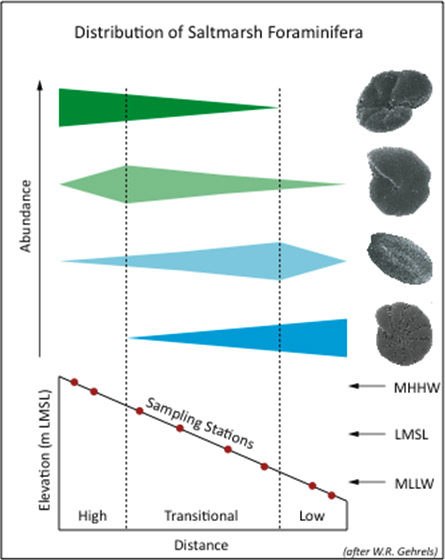Case studies of sea level change
Somerset Levels and Moors
The Somerset Levels are an extensive low lying area of drained ‘wetland’ bordering the Severn Estuary.
The geology consists of layers of sands, gravel, clay, silts and peats that would have been deposited in the last 9000 years (Holocene age).
These deposits indicate a change in the environment from marine to freshwater conditions.
This is evidence of a changing but gradual rise in sea levels during the last 9000 years.
As part of our Landscape Evolution Project, geologists at the British Geological Survey are creating a 3D geological model of these deposits to gain a better understanding of the sea, coast and inland changes to this environment since the last major glaciation in Britain.
Foraminifera and diatoms as evidence of sea level change
Planktonic microfossils such as Foraminifera and diatoms are important sea-level indicators.
Foraminifera are single celled organisms with shells made of calcium carbonate. They inhabit a variety of marine environments from the deep sea to the shallow intertidal zone.
Diatoms are single-celled algae encased in silica and live in almost any freshwater or marine environment.
Both are useful in the reconstruction of past sea levels because, in coastal environments, their presence is controlled by the tides. Foraminifera and diatoms are also found in high numbers and preserve well in the fossil record.
Tide markers
Different species occur in different quantities at different times in tides — for example one species of microfossil occurs in their highest numbers during high tides, whereas another species might not occur at all during low tide but increase to their maximum numbers at a transitional or medium tide only to decrease again during high tide.
If their relationship with the varying tides can be worked out, past sea level can be reconstructed from their abundance in sediment cores.
Many of these species reside in salt marshes where there is ample organic material available for radiometric dating — these dates can be used to cross-check rates of sea-level change in the past.









